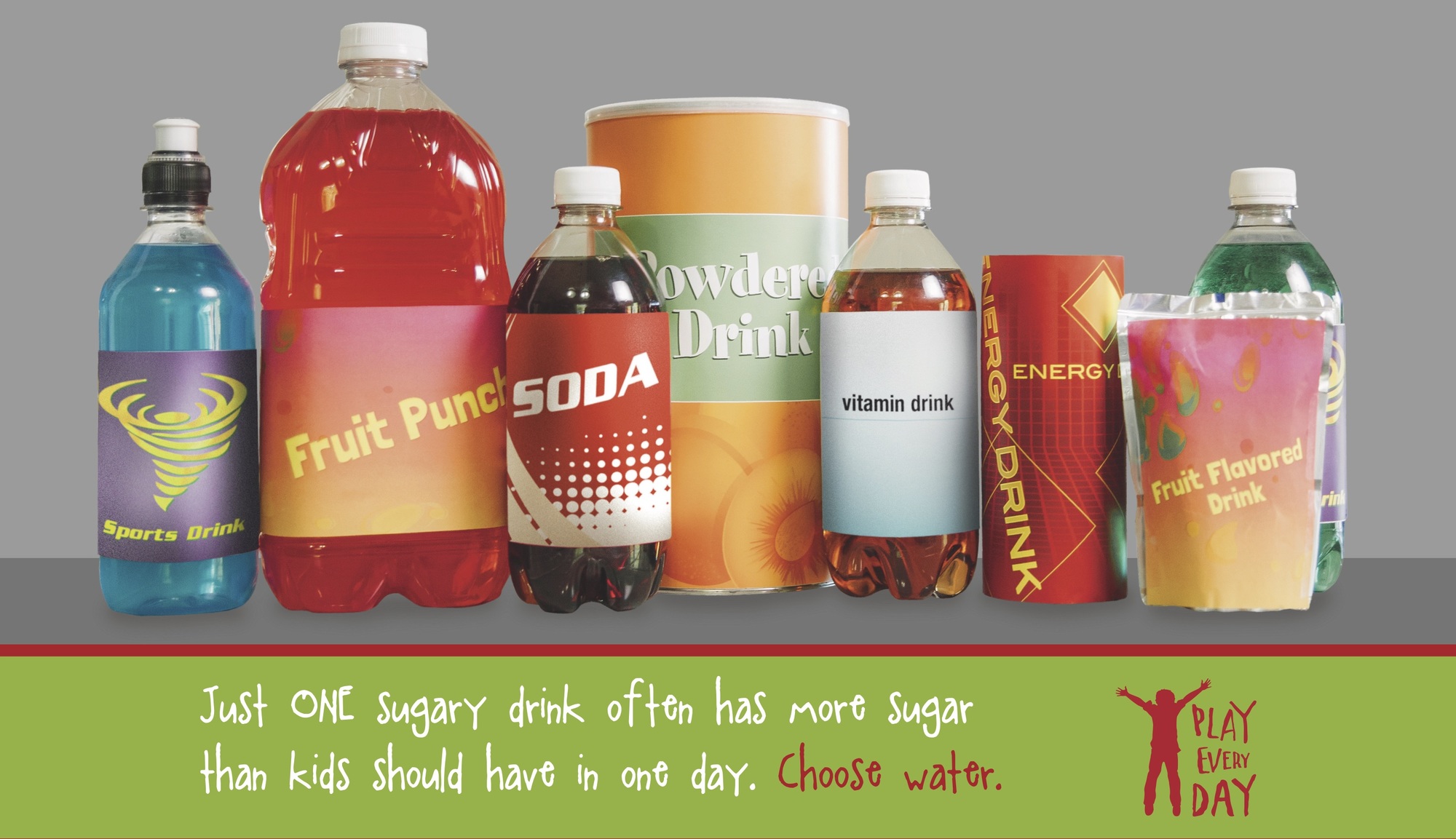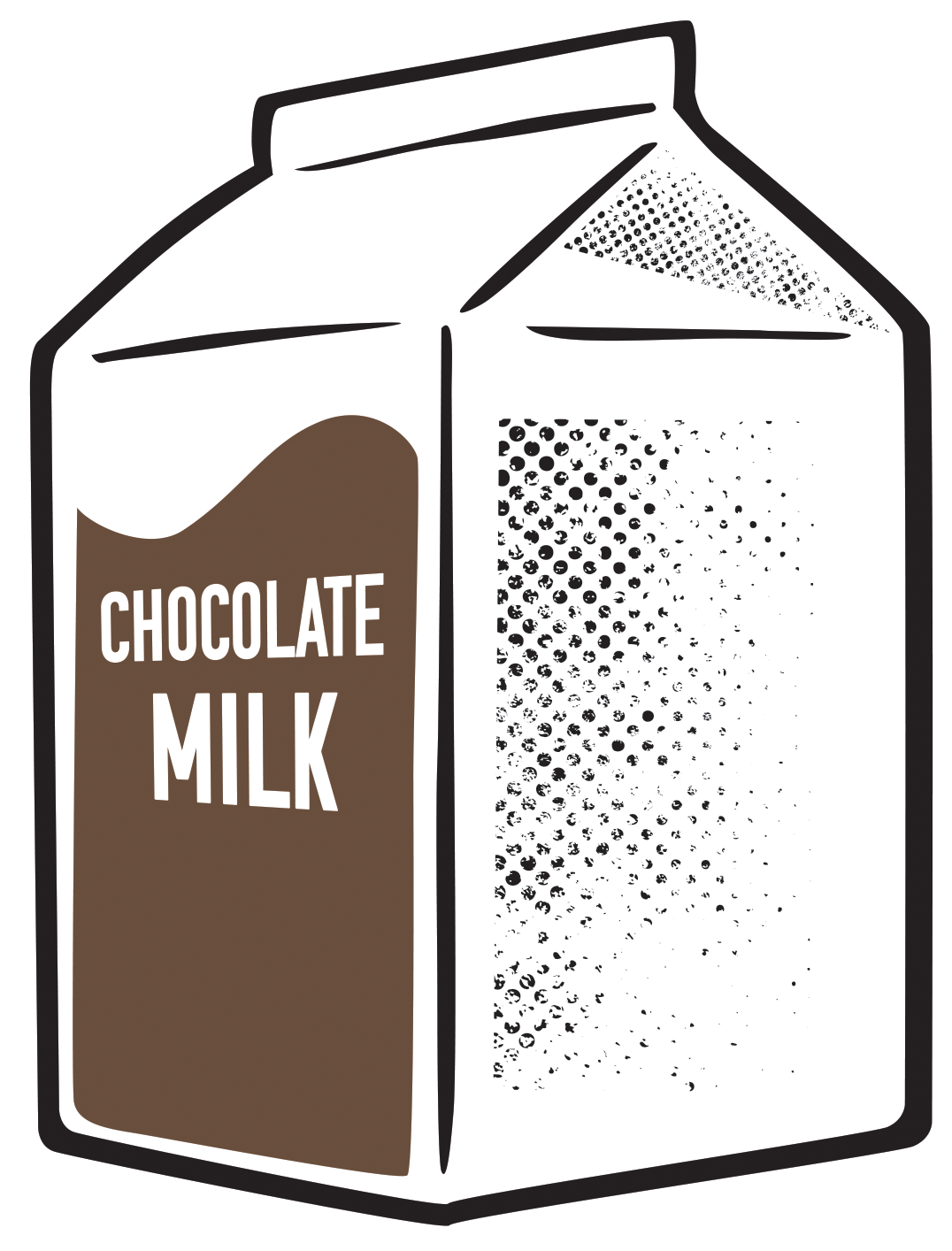Sugar can add up quickly: Swapping one food or drink for another can avoid a lot of added sweeteners / Play Every Day blog update
Alaska Department of Health sent this bulletin at 03/19/2021 01:31 PM AKDTSugar can add up quickly: Swapping one food or drink for another can avoid a lot of added sweeteners
MARCH 19, 2021 — Starting at a very early age, a lot of sugar can sneak in — even when we have the best of intentions to keep foods and drinks healthy.
When little kids try new drinks, they may get added sugar in toddler milks, powdered and liquid fruit drinks, and chocolate milk. When new foods are introduced, toddlers can eat sugar in cereals, yogurts and squeezable fruit pouches.
Cutting out sugary drinks and serving water, plain cow’s milk or unsweetened soy milk instead is one of the best ways to cut out sugar for children. But what about other sources of sugar?
“National dietary surveys are clear: Sugary drinks are the top source of added sugars for toddlers through adults,” said Diane Peck, registered dietitian and Early Care and Education Coordinator for Alaska’s Physical Activity and Nutrition program. “But there are many other foods that come with added sugar and empty calories — or calories with no nutritional value.”
Added sugars are those that are added during processing and not found naturally in a food. Natural sugars include those in whole fruit and plain white milk. Foods and drinks with added sugars often contain calories with few, if any, nutrients.

There’s not much room for added sugar in a healthy daily diet
The 2020-2025 Dietary Guidelines for Americans talk a lot about added sugar. The new guidelines recommend that children younger than age 2 should have no foods and drinks with added sugars.
Nutrient requirements for infants and young children are high because they are growing very quickly. The amount of food they eat is small, so it’s important that what they eat and drink is healthy, rich in nutrients, and low in added sugars.
The Nutrition Facts label makes it easy to see how much sugar has been added. Just look for the line that says "Includes Added Sugars" and pan over to see the percent daily value of sugar in the product.
For everyone over age 2, the Dietary Guidelines continue to recommend limiting foods and drinks with added sugars to less than 10% of calories each day. The Dietary Guidelines recommend everyone eat a healthy daily diet that includes whole grains, fruits and vegetables, lean meats and dairy, and a small amount of healthy fats in amounts that provide nutrients for good health and calories to maintain a healthy weight. Meeting food group recommendations requires most of a person’s daily calorie needs, leaving few calories for extras like added sugars and fats.
While knowing the amount of added sugar in a product is easy, knowing your or your kids’ recommended limit is a little trickier. Daily calorie needs are different for everyone, depending on age, sex, and daily physical activity. The percent daily value on the Nutrition Facts label is based on an adult daily diet of 2,000 calories. For that adult, the daily limit of added sugar should be 200 calories or 50 grams of sugar —which is the same as 12 ½ teaspoons of sugar. About 4 grams of sugar equals 1 teaspoon of sugar. Since kids need fewer calories than adults, the daily added sugar limit shrinks for little kids. The general calorie levels for a very active 3-year-old girl and a moderately active 6-year-old girl are similar, and both should limit added sugar to under 22 grams a day, or 5 ½ teaspoons each day.
The American Heart Association provides a simpler recommendation for limiting added sugars: all kids ages 2 to 18 and women over 18 should have fewer than 6 teaspoons of added sugar a day. Men over 18 years old should have fewer than 9 teaspoons a day.
How much sugar do most people actually eat or drink?
Every day, added sugars account for almost 270 calories — 17 teaspoons of added sugar — for the typical American. This average is reported in a national health and nutrition survey that’s shared in the current Dietary Guidelines.
“A national dietary survey shows that sugars are often consumed above recommended amounts beginning at an early age,” said Peck. “That survey shows the average child ages 2 to 5 gets about 11 teaspoons of added sugar every day. That’s an extra 176 calories from just added sugar each day.”
“The survey also showed that children who followed the recommended limit of less than 10 percent of the total calories from added sugars had better eating habits than those who ate or drank more added sugars,” Peck said. “That’s why it’s so important to start kids out at the beginning with healthy foods and drinks.”
Other sources of sugar add up quickly
Sugar sneaks into children’s foods in many ways. According to Peck, yogurts marketed for kids are a big source of added sugar for infants and young children.
“Yogurt is one of those foods that should be healthy,” Peck said. “It’s a good source of protein and calcium. Unfortunately, many yogurts — especially those in tubes and pouches — contain added sugar. One small 3-ounce berry-flavored yogurt in a squeeze pouch has 2 teaspoons of sugar. While that doesn’t sound like a lot, the sugar quickly adds up meal after meal to be more than the daily recommended amount for kids.”
After sugary drinks, several types of foods are the major sources of added sugars for all ages. Note that amounts of added sugar are based on a typical serving size and brand. Actual amount of added sugar will vary among brands and sizes. Sugar can be added to the following types of foods:
Sweet baked treats
After sugary drinks, the second largest source of added sugar in children’s diets is sweet baked treats, such as cakes, pies, cookies, brownies, doughnuts, sweet rolls, and pastries. Two small brownie “bites” or 3 small chocolate chip cookies can have 3 teaspoons of added sugar each. One small slice of plain chocolate cake can have 9 teaspoons of added sugar.
Candy
Candy comes next. One 1.55-ounce chocolate bar can have just over 5 teaspoons of added sugar. One small single-serving package of chewy fruit candies can have 11 teaspoons of sugar.
Sugary breakfast cereals and bars
It’s easy to start the day with a load of added sugar. One chewy chocolate chip granola bar can have 2 teaspoons of added sugar. One cup of either a honey oat cereal or a sugar-coated corn cereal can have 3 teaspoons of added sugar. You can read more about sugary cereals and breakfast foods in this Play Every blog.
Dairy desserts
Dairy desserts include ice cream, frozen dairy treats like ice cream sandwiches, and puddings. One small 3.5-ounce vanilla ice cream sandwich can have 3 teaspoons of added sugar. One 3.25-ounce chocolate pudding cup can have nearly 4 teaspoons of added sugar.
Flavored milk

Flavored cow’s milk, like chocolate or strawberry, contains the same nutrients as plain white milk, but has added sugar. One 8-ounce carton of chocolate milk can have 2 ½ teaspoons of added sugar. Flavored plant milks also can contain added sugars. One 8-ounce carton of chocolate almond milk can have 4 teaspoons of added sugar and one 8-ounce carton of chocolate soy milk can have 5 teaspoons of added sugar.
How to limit added sugar
Eating and drinking less added sugar is important for everyone’s health now and in the future. Cutting back on added sugar can help maintain a healthy weight, prevent ongoing chronic diseases like type 2 diabetes and heart disease, and reduce the chances of getting cavities.
One of the biggest ways to cut out the most added sugar is to drink fewer sugary beverages. Parents can drink coffee without sugar or sweetened syrups, and cut back on sodas and sports, energy and vitamin drinks. They can serve children water or plain milk instead of fruit drinks. If parents plan to serve 100% fruit juice, make sure that is what's in the container (fruit drinks may look like they’re 100% fruit juice, but instead contain added sugar). Then keep those juice servings small. The American Academy of Pediatrics recommends that toddlers have no more than 4 ounces (1/2 cup) in a day.
The next step is to eat fewer sugary foods. If you do have sweetened foods, take a smaller portion size than you typically would eat. Here are some swaps to consider: Peck recommends serving fresh fruit, or fruit canned in water or juice, instead of sugar-loaded desserts. Choose unsweetened applesauce instead of applesauce with added sugar. Serve plain yogurt and add frozen berries, instead of flavored yogurt with added sugar. Prepare plain oatmeal with fruit instead of oatmeal packets that come with added sugar. Snack on raw veggies, or cheese and whole grain crackers, instead of cookies or candy.
Read the Nutrition Facts label on foods and drinks to choose options with no or low added sugar. Visit this Play Every Day website to help you figure out how much sugar is hiding in your foods and drinks.
Get more tips for reducing added sugars from the American Heart Association. Learn more about healthy eating and get personalized calorie recommendations and meals at MyPlate.gov.
Sign up to receive announcements for updates to Play Every Day's blog and website.
Play Every Day is a campaign with the Alaska Department of Health and Social Services to help Alaska children grow up at a healthy weight and encourage families to be physically active and choose healthy drinks. For more information, visit www.playeveryday.alaska.gov.


